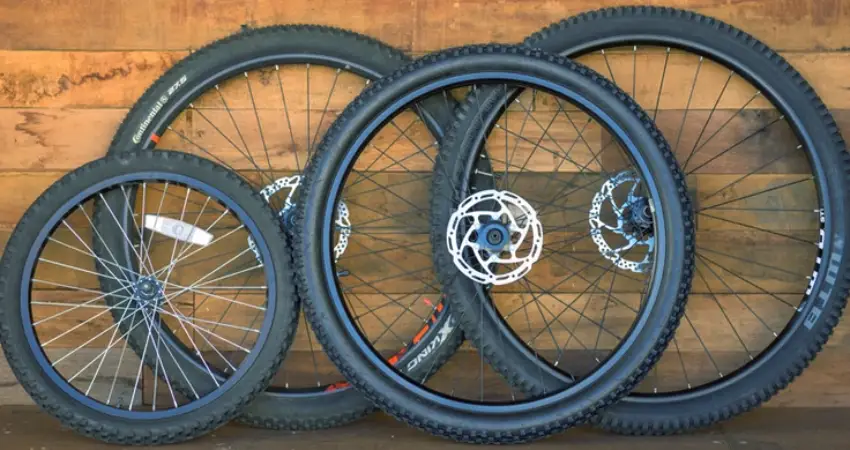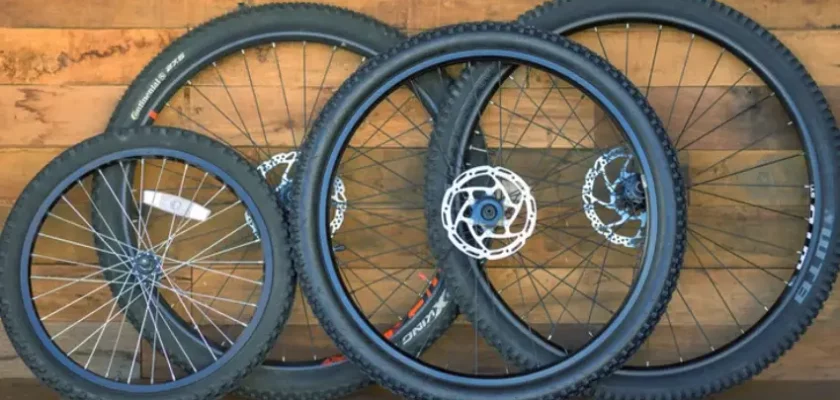Are front and back bike wheels the same? This is a question that often arises among cycling enthusiasts, both beginners and experienced riders alike. If you’ve ever pondered over this query, you’re not alone. Many people assume that front and back bike wheels are identical, but the truth might surprise you.
In this article, we will dive into the subtle yet significant differences between these two essential components of a bicycle.
When it comes to bikes, many assume that the front and back wheels are interchangeable parts. However, these wheels serve different purposes and have distinct characteristics that make each of them unique.
Throughout this article, we will explore the various aspects that set the front and back wheels apart, providing a deeper understanding of their individual functions and how they contribute to the overall performance of a bicycle.
Whether you’re a casual rider or a cycling enthusiast, understanding the differences between these two wheels can greatly enhance your riding experience. So, let’s unravel the mystery of “Are front and back bike wheels the same?” and discover the fascinating world hidden beneath the spinning spokes.

Are Front and Back Bike Wheels the Same?
When it comes to bikes, most people are familiar with two wheels – the front wheel and the back wheel. But are these wheels actually the same? If you’ve ever wondered whether front and back bike wheels are the same, you’re in the right place. In this article, we’ll explore the similarities and differences between these two essential components of a bicycle.
1. Anatomy of Front and Back Bike Wheels
Before we dive into the question of whether front and back bike wheels are the same, let’s take a closer look at the components of these wheels. Understanding their anatomy will provide a solid foundation for further exploration.
1.1 Front Wheel
The front wheel of a bicycle typically consists of the following parts:
- Rim: The outer circular part of the wheel that holds the tire in place.
- Spokes: Thin, rod-like structures connecting the rim to the hub, allowing for weight distribution and stability.
- Hub: The central part of the wheel that attaches to the bike’s fork and houses the bearings for smooth rotation.
- Axle: The shaft that runs through the hub, allowing the wheel to rotate freely.
- Tire: The rubber outer covering that provides traction and cushioning.
1.2 Back Wheel
The back wheel of a bicycle shares many similarities with the front wheel, but also possesses some distinct features:
- Rim: Similar to the front wheel, the back wheel has an outer circular rim that holds the tire.
- Spokes: Just like the front wheel, the back wheel is supported by spokes that connect the rim to the hub.
- Hub: The back wheel hub also houses bearings for smooth rotation, similar to the front wheel.
- Axle: The main difference with the back wheel is that it contains a threaded section on one side to accommodate a gear cassette or a freewheel.
- Gear Cassette/Freewheel: This is a set of gears that allows the rider to change gear ratios, enabling easier or harder pedaling.
2. Key Similarities Between Front and Back Bike Wheels
Now that we have a good understanding of the components that make up front and back bike wheels, let’s explore the similarities between these two essential parts of a bicycle:
2.1 Rim
Both the front and back bike wheels have rims that hold the tires in place. These rims are typically made of strong and lightweight materials, such as aluminum or carbon fiber. The rim size can vary depending on the type of bike and intended use, but it is common for the front and back wheel rims to be the same size in most standard bicycles.
2.2 Spokes
Spokes play a crucial role in the structural integrity and stability of bike wheels. Both the front and back wheels use spokes to connect the rim to the hub. The number of spokes can vary depending on the design and intended use of the bicycle, but it is typical for both the front and back wheels to have a similar number of spokes.
2.3 Hub
The hubs of both the front and back wheels house bearings that allow for smooth rotation. These bearings help reduce friction and enable efficient transfer of power from the rider to the wheels. While the design and construction of the hubs may differ slightly between the front and back wheels due to their various functionalities, they serve the same fundamental purpose.
3. Key Differences Between Front and Back Bike Wheels
While front and back bike wheels share many similarities, there are also several key differences that set them apart from each other. Let’s explore these differences in more detail:
3.1 Axle Design
One notable difference between the front and back wheels is the design of the axle. In the case of the front wheel, the axle is typically a simple hollow rod that runs through the hub. However, the back wheel axle is more complex. It often includes a threaded section on one side to accommodate a gear cassette or a freewheel.
3.2 Gear Cassette/Freewheel
The gear cassette or freewheel is a distinctive feature of the back wheel. It allows the rider to change gears, enabling them to pedal more easily or powerfully depending on the terrain and desired speed. The front wheel does not typically include a gear cassette or freewheel, as it is primarily responsible for steering and stability.
3.3 Weight Distribution
Another significant difference between the front and back wheels lies in their weight distribution. The front wheel typically carries less weight compared to the back wheel. This weight difference influences the handling and maneuverability of the bike. The distribution of weight plays a crucial role in how the bike responds to steering inputs and maintains stability.
4. Why Are Front and Back Bike Wheels Different?
Now that we have explored the similarities and differences between front and back bike wheels, you might be wondering why these differences exist. Here are a few reasons for the different designs and functionalities:
Steering and Stability: The front wheel plays a crucial role in steering, as it handles the forces generated during turning. It needs to be lightweight and maneuverable to aid in steering control and maintaining stability. On the other hand, the back wheel caters to the requirements of power transfer and gear mechanisms.
Gear Shifting: The back wheel’s gear cassette or freewheel allows for gear shifting, enabling the rider to optimize pedaling efficiency and adapt to various terrains. Having gears on the front wheel would not provide the same benefits and would add unnecessary complexity to the steering mechanism.
Weight Distribution: The weight distribution between the front and back wheels is optimized to provide a balanced and stable ride. Placing more weight on the back wheel improves traction and power transfer, while a lighter front wheel aids in maneuverability and control.
Frequently Asked Questions
1. Do front and back bike wheels have the same size?
Front and back bike wheels often have different sizes. The front wheel is usually smaller to enhance maneuverability, while the back wheel is larger for better power transfer and stability.
2. Are the hubs of front and back bike wheels the same?
The hubs of the front and back bike wheels differ in design. The front hub usually has a smaller diameter to accommodate the smaller axle size, while the rear hub is wider to accommodate the cassette or freewheel.
3. Are front and back bike wheels interchangeable?
Front and back bike wheels are generally not interchangeable. The front wheel usually has a different axle size and shape than the rear wheel, making it incompatible with swapping positions.
4. Are the spokes of the front and back bike wheels the same?
The spokes of the front and back bike wheels can differ in length and tension. The rear wheel often requires different spoke lengths due to the presence of the cassette or freewheel and the offset caused by the hub’s wider design.
5. Do the front and back bike wheels require different tires?
Front and back bike wheels can have different tire requirements. The front tire often prioritizes grip and steering control, while the rear tire focuses on traction and rolling efficiency to handle the propelling forces utilized during pedaling.
Final Thoughts
In conclusion, although front and back bike wheels may have similarities in terms of their basic components, such as the rim and spokes, they serve different purposes and have distinct features.
The front wheel is designed for steering and stability, while the back wheel focuses on power transmission and weight distribution. These differences make it crucial to choose the right wheels for each position to optimize performance and ensure a safe riding experience.
So, while they may share some similarities, front and back bike wheels are not the same and should be selected and maintained accordingly to enhance overall biking performance and safety.

